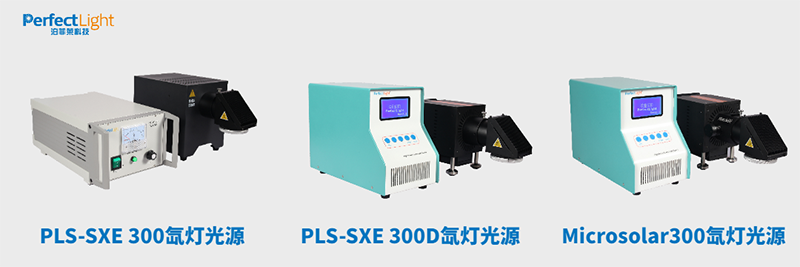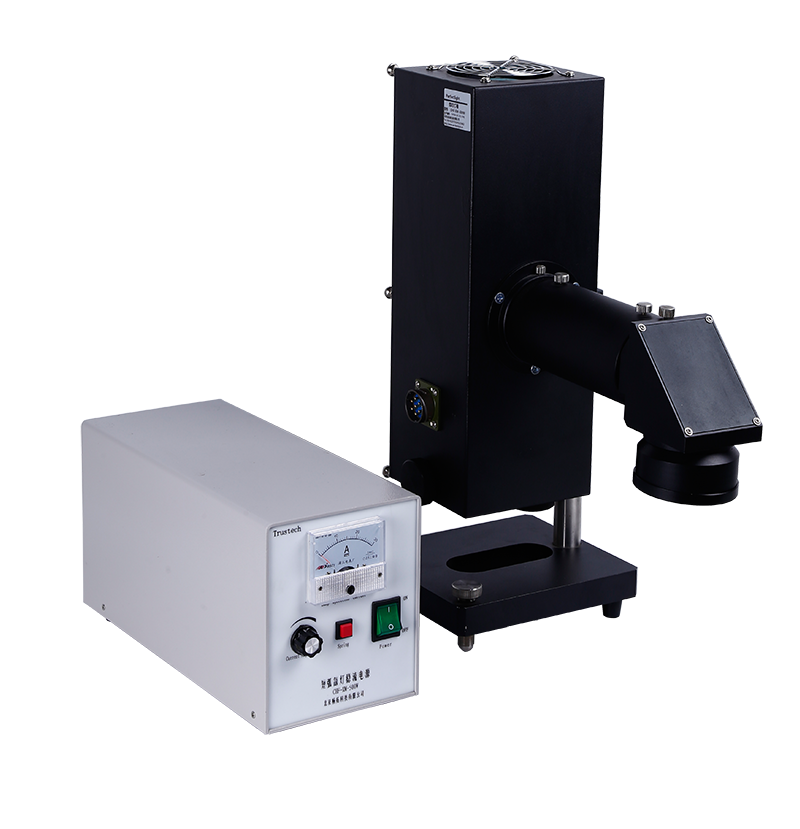A xenon lamp is an electric light source that emits light through the discharge of xenon gas at high or super high pressure. Its emitted light is a continuous spectrum, with energy distribution from 200 nm to 2000 nm, covering ultraviolet to infrared, making it particularly similar to the energy distribution characteristics of sunlight in the visible spectrum.
Therefore, both domestic and international scholars often use xenon lamps as simulated sources of sunlight in various photocatalysis experiments, such as photocatalytic water splitting for hydrogen/oxygen production, CO₂ reduction, and photodegradation.
Commonly used devices include: Perfectlight Technology's PLS-SXE 300, PLS-SXE 300D, and Microsolar 300 Xenon Lamp Source.

Although the xenon lamp spectrum does not have the same strength in the ultraviolet region as mercury lamps, it still has applications in experiments requiring ultraviolet light. PLS-SXE 300UV, PLS-SXE 300DUV, and Microsolar 300 (enhanced ultraviolet) xenon lamp sources can be used in research focusing on high-energy ultraviolet continuous distribution, such as simulating sunlight's ultraviolet component and conducting ultraviolet-accelerated experiments. These three devices can replace the reliance on mercury lamp sources for ultraviolet light experiments and provide the capability to study both ultraviolet and visible light. It's important to note that the enhanced ultraviolet xenon lamp source's energy in the ultraviolet region is continuously distributed, unlike mercury lamps, which have only a few characteristic spectral lines. ▶ Learn more about xenon lamps
In addition, xenon lamps have strong energy distribution in the near-infrared spectral region (800 nm to 1200 nm), making them suitable for use as infrared light sources.
Xenon lamps have the following characteristics:
1. Spectrum Shape Similar to Sunlight
In the spectral chart, you can clearly see the similarity between the sunlight spectrum and the xenon lamp spectrum. If higher accuracy is required, xenon lamp sources can be combined with full-reflection filters and AM 1.5G filters to achieve a closer fit to the solar spectrum.
2. Continuous Spectrum
Xenon lamp sources provide a continuous spectrum. When a continuous spectrum is required in an experiment, xenon lamps are highly suitable. However, xenon lamp sources can also output narrowband wavelengths through accessories such as filters and monochromators for quantum efficiency measurements. Currently, Perfectlight Technology offers 15 types of monochromatic filters, including commonly used wavelengths in the ultraviolet and visible regions.

3. Higher Light Power Density
Xenon lamp sources can achieve a light power density of up to 1500 mW/cm² at their emission port, much higher than the 100 mW/cm² light power density of sunlight. Therefore, xenon lamp sources can better facilitate reactions in photocatalysis experiments. That concludes the characteristics of xenon lamp sources. Now, let's take a look at mercury lamp sources.
A mercury lamp is an electric light source that produces visible light by generating mercury vapor through mercury discharge. The spectrum of a mercury lamp tends to be in the ultraviolet region. In experiments where catalysts respond only to ultraviolet light and not visible light, a mercury lamp can be considered as a light source to simulate ultraviolet light. For example, TiO₂ is only excited to produce electron-hole pairs in the presence of ultraviolet light, and it exhibits good photocatalytic performance. Recommended equipment: Perfectlight CHF-XM series mercury lamp sources, available in 250 W and 500 W models.

Unlike xenon lamps, the light emitted by mercury lamps consists of spectral lines, with typical wavelengths of 254 nm, 313 nm, 550 nm, etc. The output spectrum of a mercury lamp depends on the mercury vapor's filling pressure.
Mercury lamps can be categorized into low-pressure, high-pressure, and super high-pressure types:
- Low-pressure mercury lamps have mercury vapor pressures of less than 1 atm. In this case, the primary radiated wavelength is 253.7 nm in the ultraviolet region.
- High-pressure mercury lamps, when ignited, absorb the 253.7 nm resonance line (ultraviolet spectrum), increasing the intensity of visible spectrum lines primarily radiating at 404.7 nm, 435.8 nm, 546.1 nm, and 577.0–579.0 nm. Additionally, they emit strong 365.0 nm long-wavelength ultraviolet radiation.
- Super high-pressure mercury lamps operate at mercury vapor pressures exceeding 1 MPa. These lamps emit strong radiation from long-wavelength ultraviolet to visible light, primarily at 546.1 nm.
That's all about xenon lamp sources and mercury lamp sources. If you have any related questions, you can reach out to Perfectlight Technology's official WeChat (Perfectlight2002) or call 400-1161-365 for assistance.